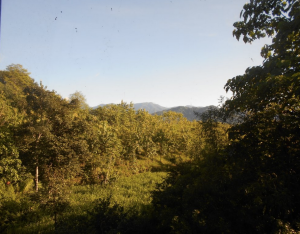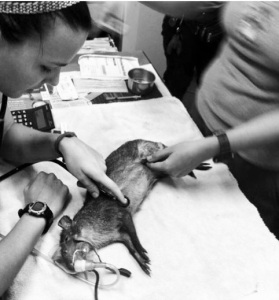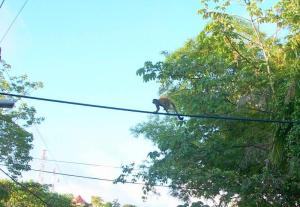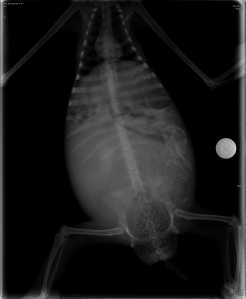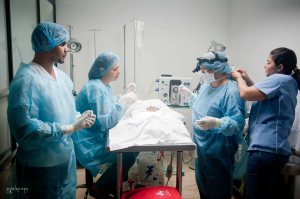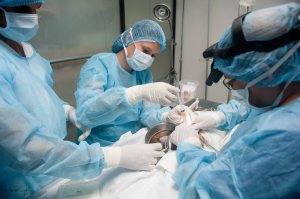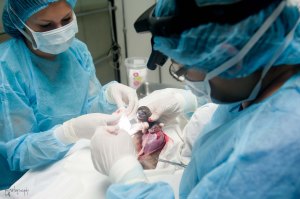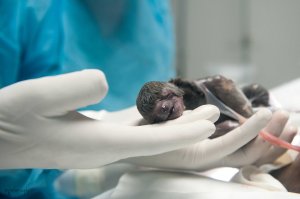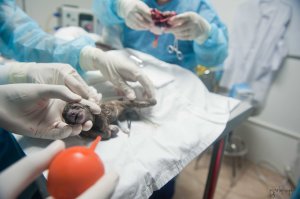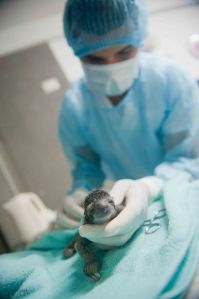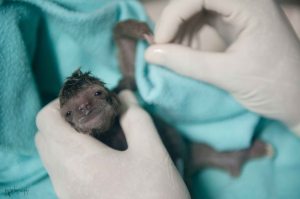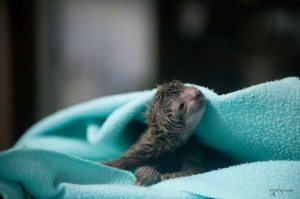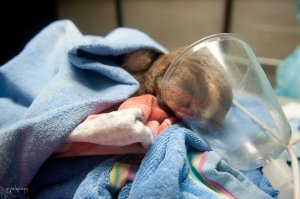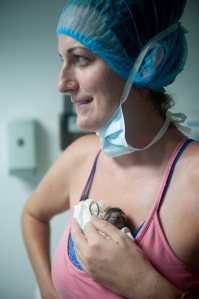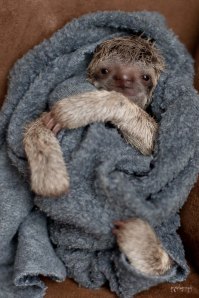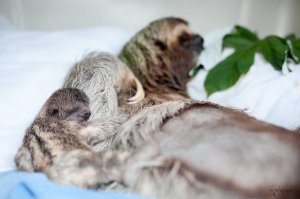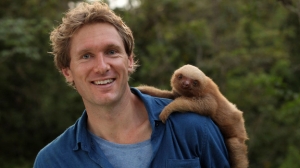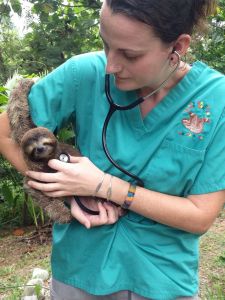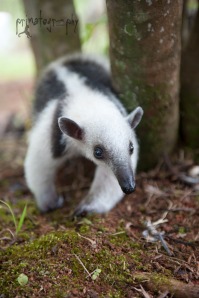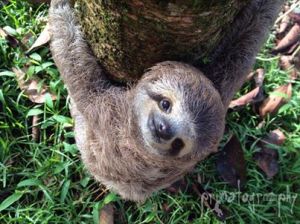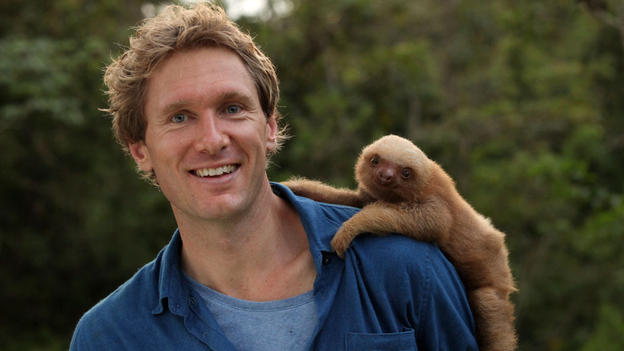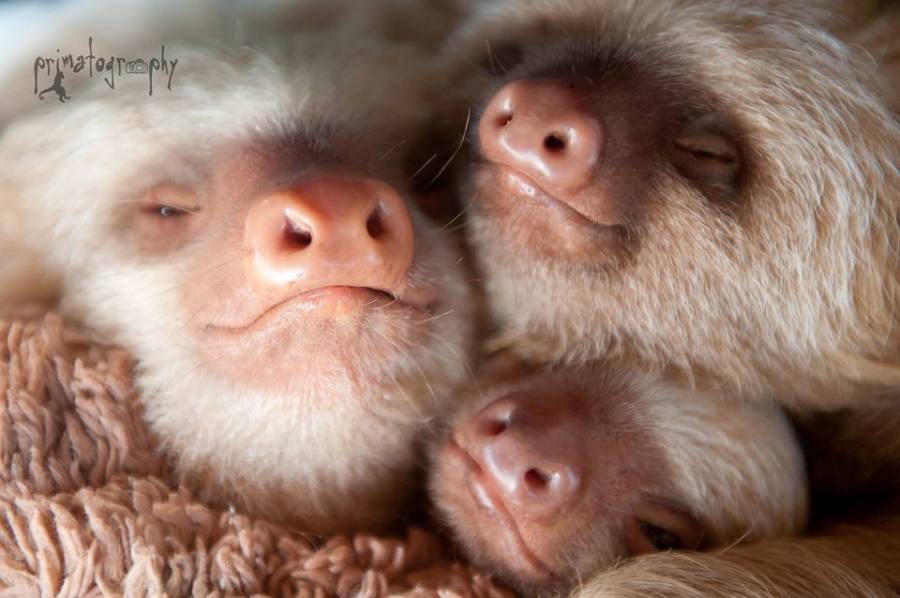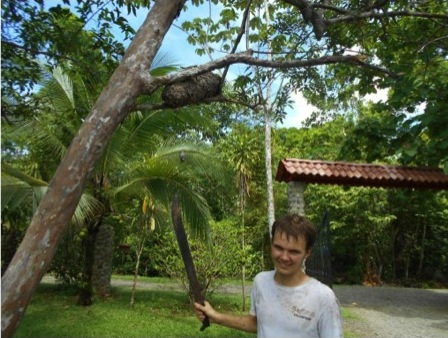 By: Intern Duncan Coleman
By: Intern Duncan Coleman
The darkness was setting in on the “secret” garden. The night’s grasping fingers had finally prevailed over the shining rays of the sun. My mind swam in a sea of uncertainty. Panic was overcoming me. Questions surfaced from the depths of my consciousness like so many crashing waves in a tempestuous ocean. Would she ever come down? Would she sleep in the tree all night? What would happen if I lost her? Will she die?! A bloodthirsty swarm of mosquitoes now descended upon me in the twilight dusk, buzzing in triumph at having secured a new host. Now I questioned whether I would make it through the night.
I came to be involved in this dire fiasco when I decided to take Amy on a walk in the Secret Garden. Amy was an anteater. She had reached her full adult size and was a sight to behold. She was the queen of the night, garbed in a flowing black jacket over her broad grey shoulders. Her beauty knew no bounds. For, she possessed an untamed, wild spirit within her that all the more enhanced her majestic figure. Amy, however, was scarred by the merciless hand of life. She was attacked by a dog. In the struggle for her continued existence she lost her right front claw and badly injured her left paw. It was in this deplorable condition that KSTR found her; bleeding, afraid, and desperate for help.
Then… she arrived. When I first laid my eyes upon her I could not help to stand aghast, awestruck by her. It was as if she was the sun and I was the sole beholder of the dawning of the world. She came into my view with all her golden glory, all her crimson creation, and all her maroon majesty. I was caught, helpless to escape from the web of wonderment that now seemed to envelop my heart.
Amy gathered her strength in the wildlife rehabilitation clinic at KSTR. As each day faded into the next, Amy grew stronger. The healing ointment, the fresh termites, the cosy anteater abode, and the unconditional love of her caretakers sped Amy’s recovery.
Yet, for all this, I longed to take her out into the Secret Garden to see her in all her glory. I hoped for a glimpse, a small taste of what it was like to see her in the wild. In my eyes, she was but a reflection of her true, unbridled beauty outside of her natural environment. She was a moonlit marvel, masking the true, raw, blazing flames of her innermost soul. Taking Amy to the Secret Garden was the only way I could peer into her that natural inferno of the purest beauty.
The Secret Garden is the paradise for anteaters. When you enter the garden, you enter from high above. Trekking downwards, you can see an expansive meadow surrounded by towering rainforest trees to the right. These trees act as the gatekeepers to the garden, sheltering it from wandering eyes. A small gurgling brook runs through the meadow, which feeds into a stream that flows on one side of the garden. The grass grows long and green. The butterflies glide across the meadow this way and that. Wild monkeys can be faintly heard in the distance. Aromas of fresh citrus fruit and blossoming hibiscus can be smelled in the breeze. The birds fill the air with sweet melodies that seem to briefly touch the soul with each chirp. In this land, a bountiful feast of ants and termites beckons anteaters across the land to climb up the leafy trees and lap up the juicy morsels.
Soon enough, I found myself with Amy in this veritable Anteater Eden. I watched from afar as she climbed in a tree dressed ornately in lush, light-green bromeliads. Even without her front claw, she climbed with a grace that I had never before witnessed. Her movements were slow and calculated, yet absolutely effortless, as if flying on the whims of the wind or swimming with the currents of the ocean. Then, all of a sudden, she stopped her graceful sail through the branches. In drowsy ant-induced ecstasy, Amy fell asleep in the tree.
And so… the darkness crept into the garden, the mosquitoes descended upon me, and my mind became awash in a tempestuous sea of unanswerable questions. I paced back and forth. I worried and fretted over what to do. My radio did not work and I had no headlamp to see Amy. Worst of all, my exposed legs and arms were getting attacked by a never ending onslaught of vicious mosquitoes.
In a frenzied panic, I ran. I ran up the hill all the way to the clinic. I told the others what had happened, snatched a headlamp, a working radio, and a rain jacket. With these items in tow, I raced back to the Secret Garden, hoping that she was still asleep in the same tree where I had left her.
To my amazement, Amy still lay asleep in the same nook of the tree that I left her in. Relief welled over me and I thanked the heavens for her continued slumber. My feeling of relief was short lived when the thought of staying in the Secret Garden overnight crossed my worried mind. Bloodthirsty monsters were – quite literally – draining me of life, weakening my resolve and willpower to continue. In a spout of hysteria, which was partly due to my predicament, I began to think that what I was watching was not really an anteater at all, but a part of the tree that looked like an anteater.
I called over the radio for someone to come down and ameliorate my fear of my own mind playing tricks on me. The two brave souls who came down to the Secret Garden, Dani and Kristy, assured me that I was in fact looking at an anteater. With this assurance, I left the secret garden, vowing to return at dawn. The decision would later come to haunt me…
To be continued in September’s Quepolandia…..stay tuned!
